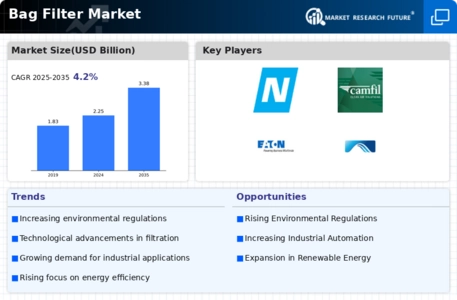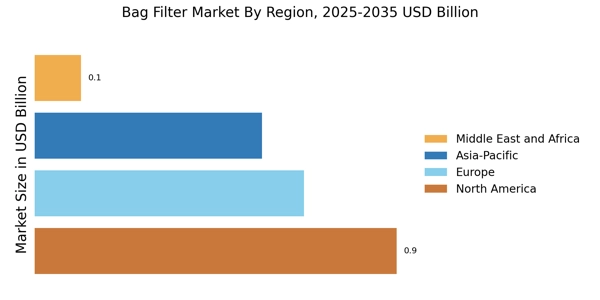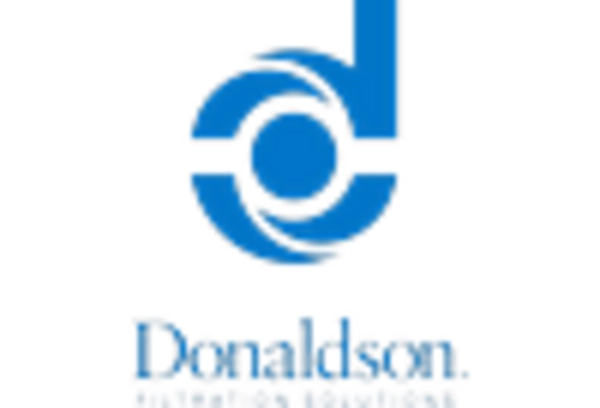Rising Industrialization
The ongoing trend of industrialization across various sectors appears to be a primary driver for the Bag Filter Market. As industries expand, the demand for efficient air and liquid filtration systems increases. This is particularly evident in manufacturing, mining, and chemical processing sectors, where particulate matter and pollutants are prevalent. According to recent data, the industrial sector is projected to grow at a rate of approximately 4.5% annually, which could lead to a corresponding rise in the need for bag filters. The Bag Filter Market is likely to benefit from this growth, as companies seek to enhance their operational efficiency while adhering to environmental standards. Furthermore, the increasing focus on reducing emissions and improving air quality may further bolster the demand for advanced filtration solutions.
Environmental Regulations
Stringent environmental regulations are increasingly shaping the Bag Filter Market. Governments and regulatory bodies are implementing laws aimed at reducing air and water pollution, which necessitates the use of effective filtration systems. For instance, regulations such as the Clean Air Act in various regions mandate industries to control emissions, thereby driving the adoption of bag filters. The market data indicates that compliance with these regulations is expected to propel the Bag Filter Market, as companies invest in technologies that meet or exceed these standards. This trend not only enhances environmental protection but also encourages innovation in filtration technologies, leading to the development of more efficient and sustainable bag filters.
Technological Innovations
Technological advancements are playing a crucial role in the evolution of the Bag Filter Market. Innovations in materials and design are leading to the development of more efficient and durable bag filters. For example, the introduction of nanofiber technology has significantly improved filtration efficiency and reduced pressure drop, which is essential for energy savings. Market data suggests that the adoption of smart filtration systems, which incorporate IoT and automation, is on the rise. These systems allow for real-time monitoring and maintenance, enhancing operational efficiency. As industries increasingly prioritize efficiency and sustainability, the Bag Filter Market is likely to see a surge in demand for these advanced filtration solutions.
Expansion of End-User Industries
The expansion of end-user industries such as pharmaceuticals, food and beverage, and power generation is significantly influencing the Bag Filter Market. These sectors require high levels of cleanliness and compliance with stringent quality standards, which drives the demand for reliable filtration solutions. For instance, the pharmaceutical industry is projected to grow at a rate of 5% annually, necessitating advanced filtration systems to ensure product quality and safety. Similarly, the food and beverage sector is increasingly focusing on maintaining hygiene and safety, further propelling the need for bag filters. As these industries continue to expand, the Bag Filter Market is likely to experience robust growth, driven by the need for effective filtration solutions.
Growing Awareness of Air Quality
The increasing awareness of air quality and its impact on health is driving the Bag Filter Market. As public concern over air pollution rises, industries are compelled to adopt measures that mitigate their environmental footprint. This trend is particularly pronounced in urban areas, where air quality issues are more visible. Data indicates that the demand for air filtration systems, including bag filters, is expected to grow as businesses and municipalities seek to improve air quality. The Bag Filter Market stands to gain from this heightened awareness, as more organizations recognize the importance of investing in effective filtration solutions to protect public health and comply with emerging standards.


















Leave a Comment